Submission on Limerick City and County Council Road Traffic (30 kilometres per hour Special Speed Limit) Bye-Laws 2021
We’ve spent a lot of time and money over the last few decades in Limerick, building bypasses:
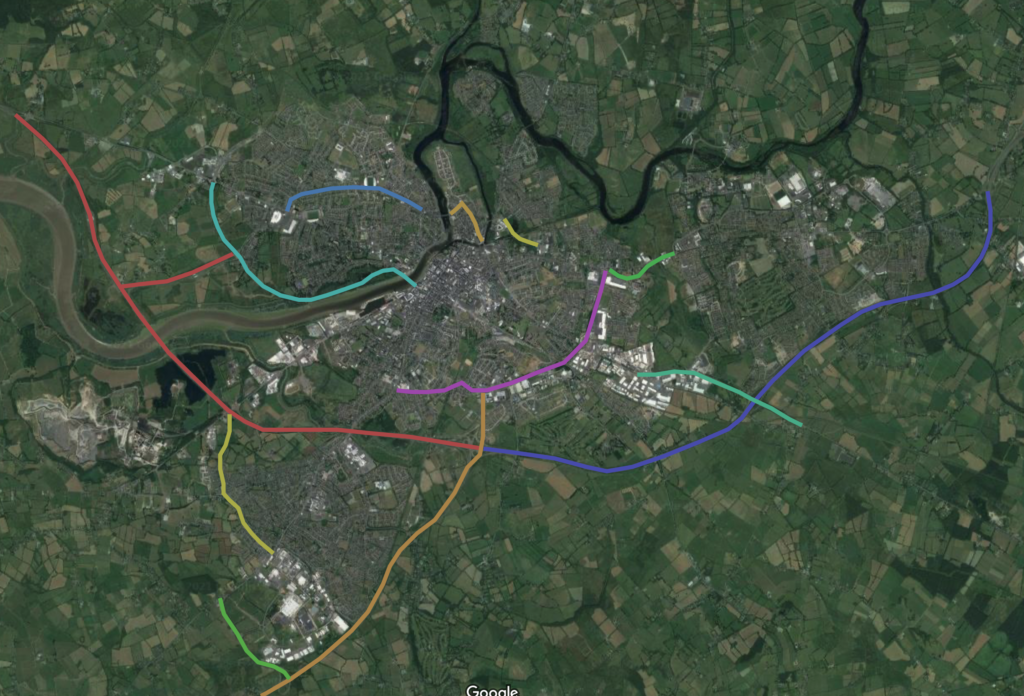
Limerick is on a crossroads between, Cork, Galway, Kerry and Dublin. We built a lot of bypasses to facilitate this interurban traffic that had no real business passing our doors. But, despite promises of a future city that would be focused on people (just one more bypass!), none of our streets ever changed, and the interurban traffic was replaced with intraurban traffic.
If we want a better Limerick, a more prosperous Limerick, a more inclusive Limerick, one place we can start is our streets. The current proposal is a fairly modest expansion of the 30km/h zone into a few more housing estates in Limerick City, most of which are on the northside. This is welcome, but it is a small change. We are not proposing to expand the 30km/h area in our city centre, and the majority of the city centre, where we were promised that pedestrians would come first, is still a 50km/h zone. The towns and villages of County Limerick are similarly prioritised for motor traffic.
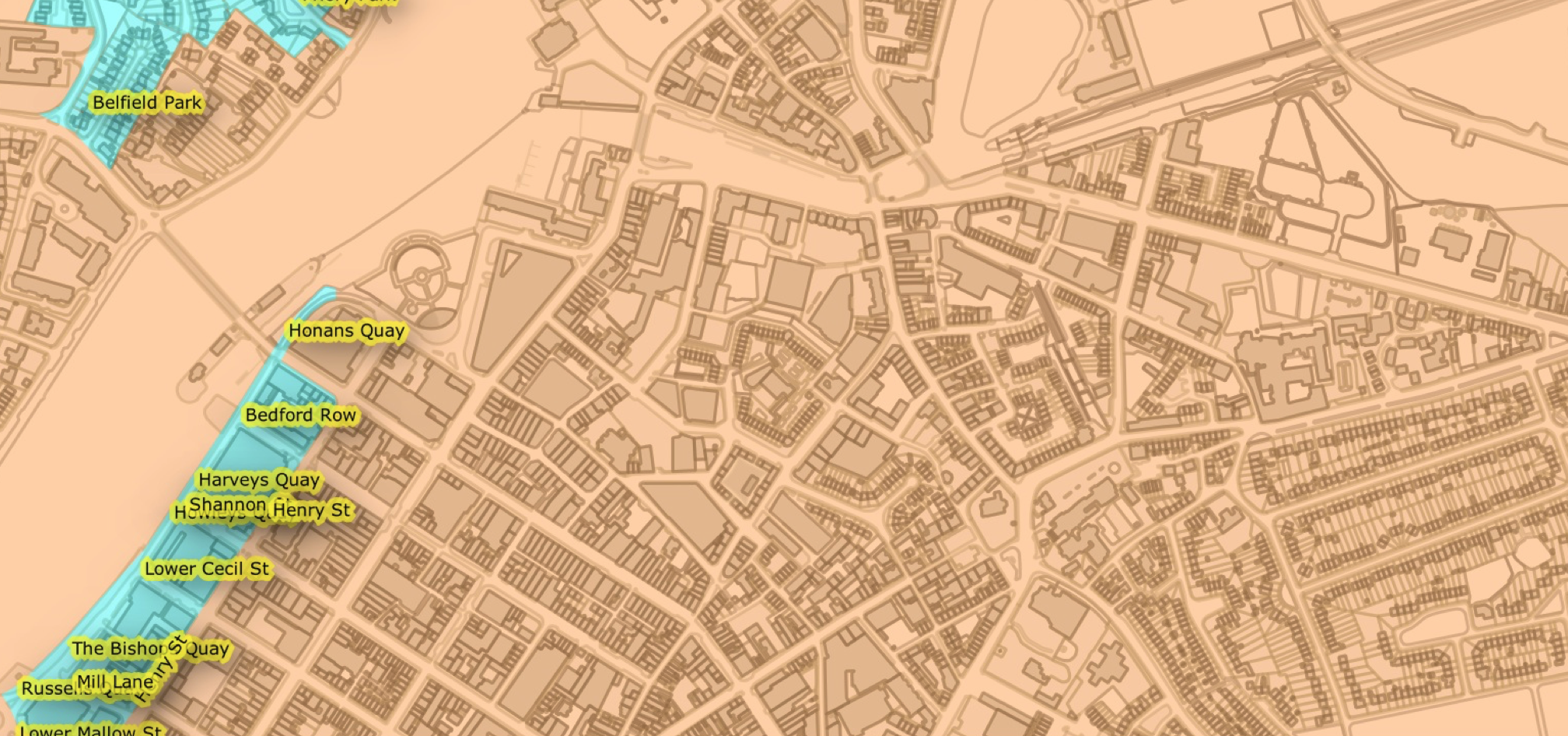
I would like to suggest a different approach, that we make all built up areas of Limerick City, and our towns and villages in Limerick County, a 30km/h limit, with certain exceptions, for reasons of safety, noise pollution, air pollution and climate.
Safety
The Road Safety Authority says that cutting speed from 50km/h to 30km/h will change the probability of a person in a car killing a person walking from 50% to 10%.
The main reason for this dramatic difference in the probability o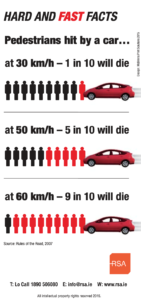 f fatalities is that the kinetic energy of the car is proportional to the square of the velocity: ½mv2. What’s also worth mentioning in passing is that the other variable in the equation, the mass of the vehicle, has also changed, the best selling car in Ireland last month was the Hyundai Tucson which has a real world weight of 1.8t, in contrast to the slightly under 1.0t of the Toyota Corollas who used to drive the city’s streets back in the 1990s. We need a reduction in speed limit to compensate for the motor industry’s tendency to build much heavier cars.
f fatalities is that the kinetic energy of the car is proportional to the square of the velocity: ½mv2. What’s also worth mentioning in passing is that the other variable in the equation, the mass of the vehicle, has also changed, the best selling car in Ireland last month was the Hyundai Tucson which has a real world weight of 1.8t, in contrast to the slightly under 1.0t of the Toyota Corollas who used to drive the city’s streets back in the 1990s. We need a reduction in speed limit to compensate for the motor industry’s tendency to build much heavier cars.
We need to cut the speed limit in all urban areas to save lives. The headlines below all refer to different cases of pedestrians being killed by people driving cars in Limerick.
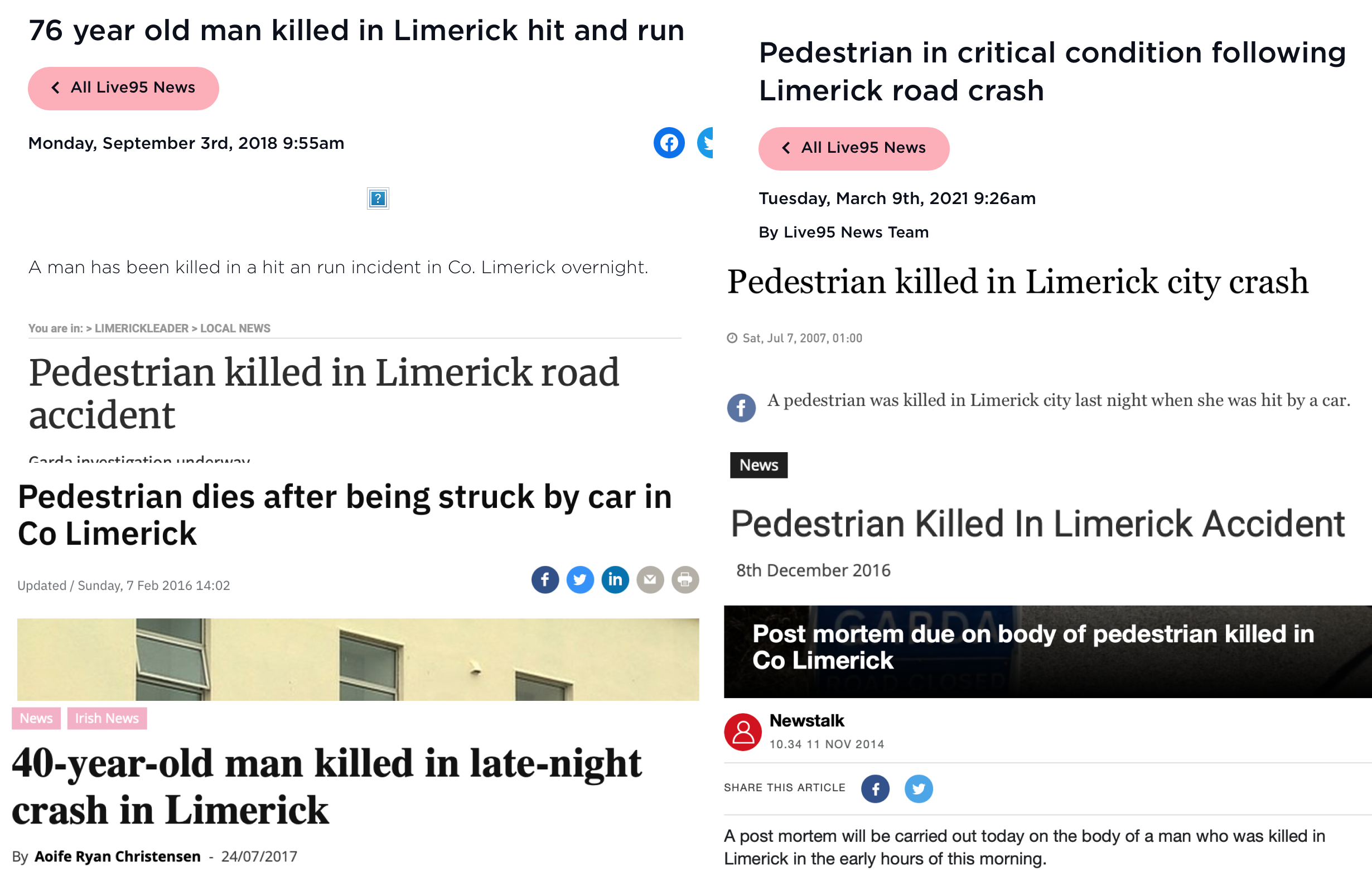
Noise pollution
Limerick is a noisy city, and it is affecting our health. The European NGO Transport and Environment says that reducing the urban speed limit from 50 km/h to 30 km/h reduces noise by 3 decibels, or approximately halving the background noise, allowing more of us to leave our windows open, or to converse comfortably on our streets.
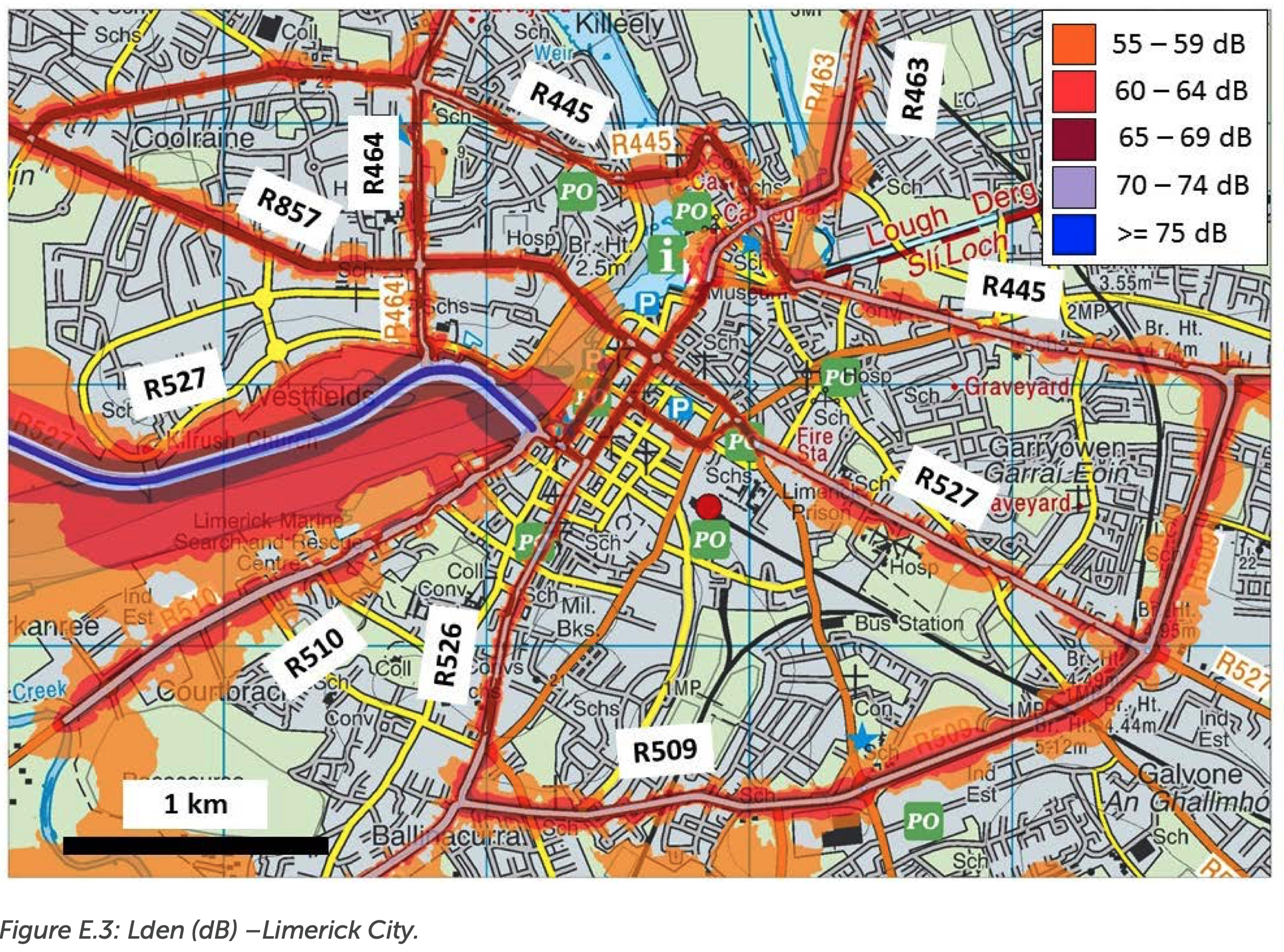
Air pollution
We are exceeding the recommended level of particulates. Even during lockdown in April, we were exceeding WHO-recommended levels of particulates in our city centre.

Reducing the speed limit would particularly help reduce NOx levels from traffic.
Climate
The Climate Action and Low Carbon Development (Amendment) Act 2021 mandates that the next two carbon budgets, covering the period to 2030, must represent a 51% reduction in emissions over 2018 levels and also mandates that a public body (which includes Limerick City and County Council) must, in so far as practicable, perform its functions in a manner consistent with the national climate objective (net zero by 2050) and the objective of mitigating greenhouse gas emissions and adapting to the effects of climate change in the State
The planet is literally burning and we need to do everything we can to reduce our greenhouse gas emissions, 20% of which in Ireland comes from transport. We need to encourage people to walk, cycle, or take public transport in urban areas. Reducing the urban speed limit will make driving less attractive.
Exceptions
Once the 30km/h default urban speed limit is established in Limerick, we can then look at very limited exceptions, perhaps on one or two of the many bypasses that have been built in the city, where the limit could be increased back to 50km/h. Critically this should only take place where there is a comprehensive safety audit and the provision of infrastructure to ensure that pedestrians and cyclists are physically segregated from traffic travelling at 50km/h, including at junctions.
